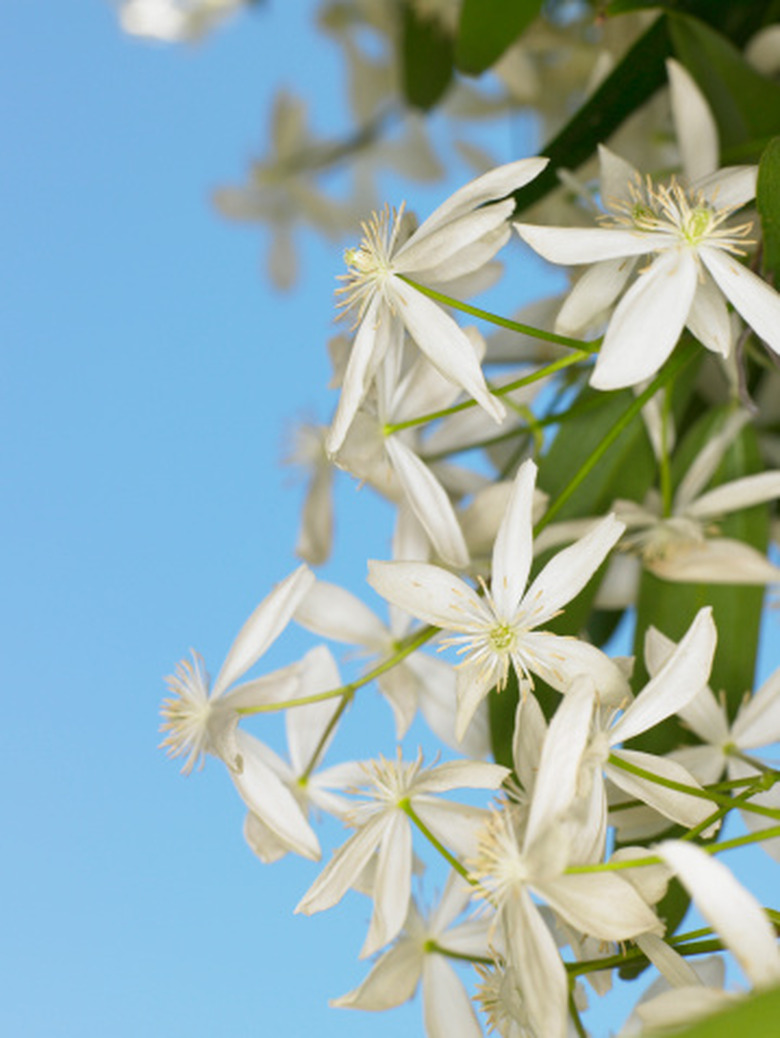How To Protect Clematis From Frost
Clematis is a genus of plant known for its wooden vinelike appearance and the way it wraps itself around supporting structures. It is also known for its brightly colored flowers, the specifics of which vary depending on the type of clematis plant. Like most plants, clematis are susceptible to cold weather, ice and frost. Frost can quickly kill a clematis plant if it is not protected. Protecting clematis from frost requires some preparation and diligence.
Step 1
Move any clematis that are growing out of containers indoors to keep them out of frost conditions. Make sure they are still getting plenty of sunlight.
- Clematis is a genus of plant known for its wooden vinelike appearance and the way it wraps itself around supporting structures.
Step 2
Cover any clematis that are still outdoors with a tarp during heavy snow or frost weather to help insulate them and to keep much of the freezing moisture off of them. Remove the tarp once the snow or freeze is over so the plant can still get sunlight.
Step 3
Add a thick layer of mulch over the root system in the winter months to further insulate them against freezing.
Protect Clematis From Frost
Plant your clematis near a south or west-facing wall, as these sides tend to absorb significant amounts of heat and will radiate it back to the plant during the night. Bury the crown of large-flowered clematis hybrids 3 to 5 inches below the ground to protect them from frost and freezes. Move potted clematis to a protected location, such as under a covered porch or into an insulated garage. Space the stakes several inches away from the outside edge of the plant and drape the stakes with burlap or a commercial frost cover that reaches the ground; do this before sunset to capture the most heat possible. Remove the covers in the morning once the sun has melted the frost away.
- Cover any clematis that are still outdoors with a tarp during heavy snow or frost weather to help insulate them and to keep much of the freezing moisture off of them.
Things Needed
- Tarp
- Mulch
References
- Garden Action: Clematis Care
- Sunset Plant Finder: How to Choose and Grow Clematis
- University of California Marin Master Gardeners: How to Protect Plants from Frost
- University of California Sacramento Master Gardeners: Frost Protection for Sensitive Plants
- Sunset: Protect Plants from Frost
- Redwood Barn Nursery: Frost Protection in the Garden
